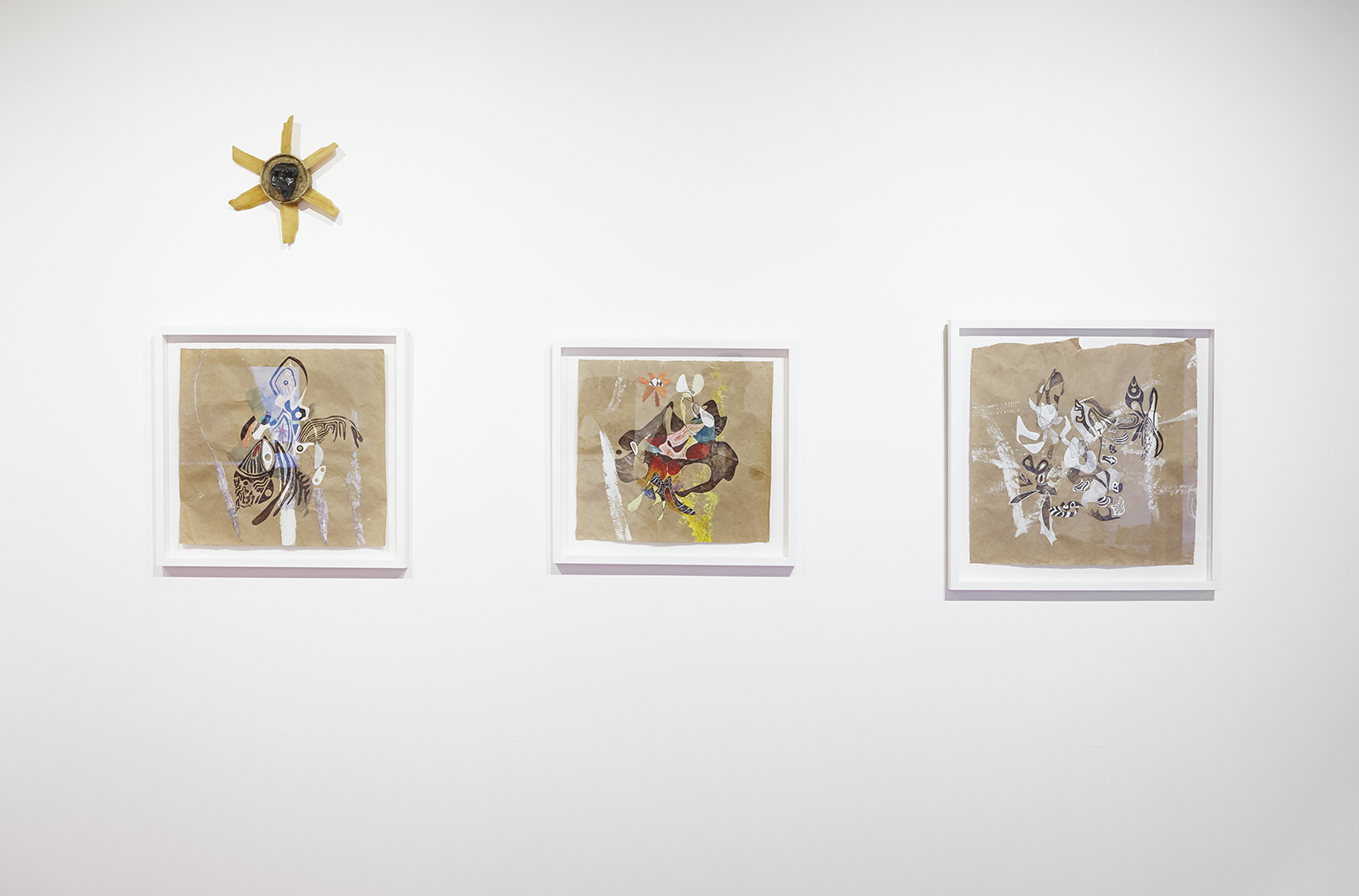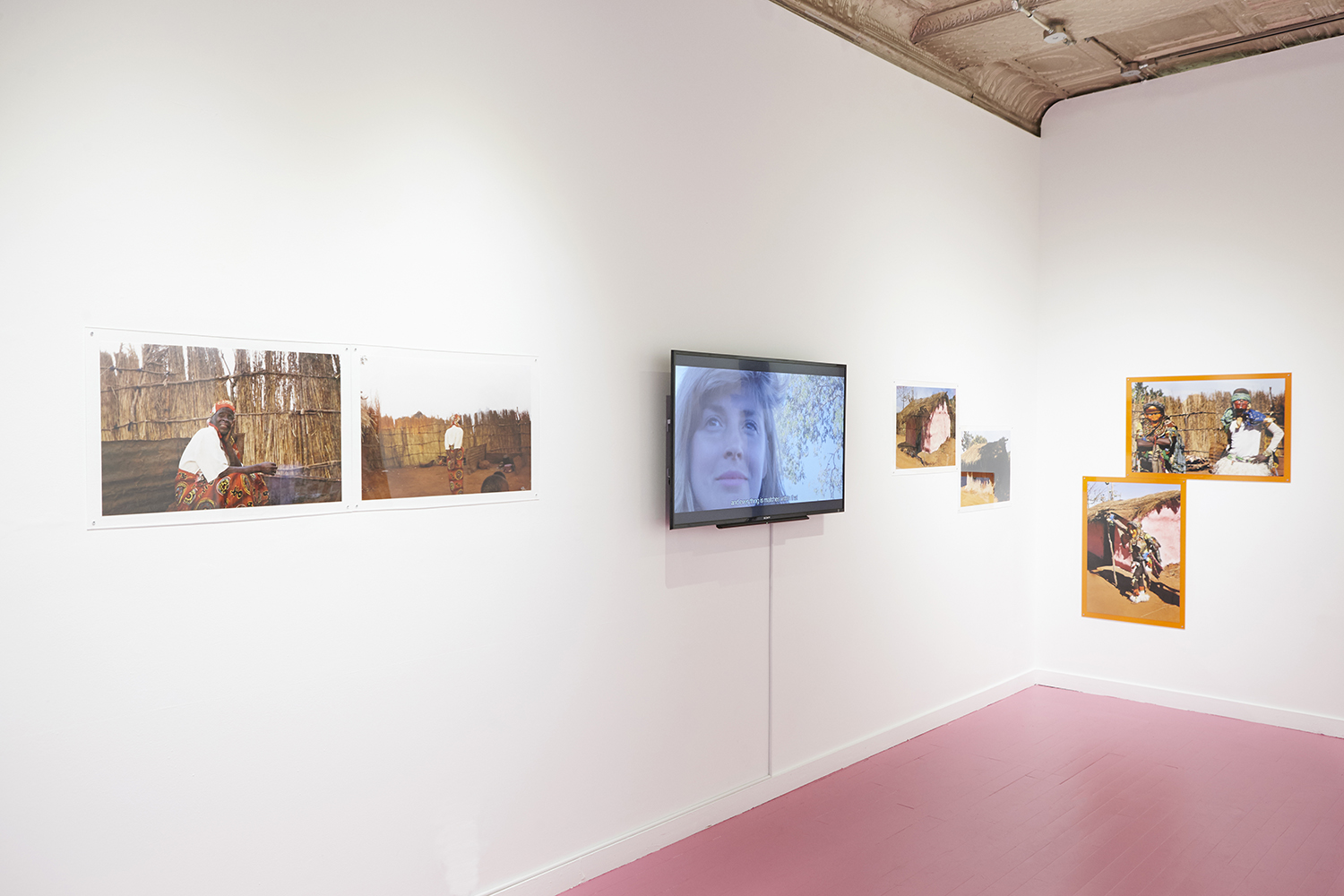Zig Zag Zim
Virginia Chihota, Admire Kamudzengerere, Rachel Monosov, Terrence Musekiwa, Xavier Robles de Medina, Justin Orvis Steimer

Installation View
Zig Zag Zim: I, 2016
New York, NY

Installation View
Zig Zag Zim: I, 2016
Terrence Musekiwa and Virginia Chihota
New York, NY

Installation View
Zig Zag Zim: I, 2016
Rachel Monosov
New York, NY

Installation View
Zig Zag Zim: I, 2016
New York, NY

Installation View
Zig Zag Zim: I, 2016
Terrence Musekiwa and Justin Orvis Steimer
New York, NY

Installation View
Zig Zag Zim: I, 2016
New York, NY
New York, February 26, 2016 – In the Summer of 2015, we embarked on the journey of a lifetime. Coming from different corners of the planet, on a Winter’s day in July, we landed in Zimbabwe’s capital city, Harare. We expected to be amazed. We hoped to learn and grow. We even thought we might mock our own “otherness” and pursuit of the exotic. What we did not know then was that this trip would change us forever. The “we” in this case were Catinca Tabacaru, the gallery’s fearless namesake owner, Raphael Guilbert, the young and multi-talented assistant director, and three roster artists: Russian-Israeli force of nature Rachel Monosov, Surinamese Xavier Robles de Medina whose talent is as true and ancient as the plains burning all over Sub-Saharan Africa, and American rock-star painter Justin Orvis Steimer.
The inception of the idea for this adventure came some two years earlier on a trip to the 2013 Venice Biennial. Having spent some time living in Africa, Catinca found her way to the Zimbabwean Pavilion, one of the only African Pavilions, a fifth floor walk-up on the way to the Giardini. Inside, she found a drawing that both excited with its contemporary lines and evoked deep emotions by way of its subject matter: Virginia Chihota’s Mistakes In The Right Lines, a work that anchors this exhibition in its revelation of the story’s starting point.
Catinca returned to the Zimbabwean Pavilion in 2015 while in Venice working with the European Pavilion who presented works by young Justin Orvis Steimer alongside legends including Yoko Ono and Herman de Vries. Again, the Zimbabwean Pavilion surpassed all expectations with textural giant paper works by Gareth Nyandoro, also an artist in this exhibition, stealing the show. This time, Catinca struck up a conversation with Raphael Chikukwa, the Pavilion’s curator and one of Africa’s star curators, and expressed her growing interest in building a collaboration between her artists and the Zimbabwean emerging art scene. That exchange quickly snowballed and landed the group in Harare not two months later. The rest is very literally history in the making.
Everything that happened during our stay in Zimbabwe crossed and re-crossed artistic, cultural and personal boundaries. The Residency became a space where the traditions of Zimbabwean ancestors were not only kept alive but propagated, and simultaneously, where artistic pursuit was relentlessly challenged as the artists collectively pushed to evolve, playing their part to assist Zimbabwe’s transition into a real player on the international contemporary art scene.
Much of the work completed during the Residency involved artist-to-artist assistance. Two major collaborations were conceived and continue to develop to date: Admire Kamudzengerere’s Paper Project and Rachel Monosov’s #PinkVillage. They make appearances in this Exhibition in video, painting, photography, performance and sculptural forms. Both projects take fine art outside the formal white-box gallery, effectively turning the gallery inside out. Although the American Embassy refused to grant Admire Kamudzengerere a visa to physically participate in this exhibition, when the show travels to the National Gallery of Zimbabwe to open on April 28 of this year, Kamudzengerere will unroll the 2km long scroll-like paper first used during the Residency through the Gallery doors and onto the city streets. Remnants of the reddish Zimbabwean earth and other detrius will be joined by new marks as the paper spills into the city. Sections of the paper will be left unrolled while the rest will be re-rolled and placed within the gallery space like sculptures telling the story of their making.
Notably, #PinkVillage has captured the hearts and minds of local community leaders and art curators. It began as the painting of five mud huts pink. This aesthetic act questions ideas of aid and assistance in Africa. What happens when you give people not their survival necessities but a gift, which one artist desires to see manifested for formalistic reasons? The creative pursuit of bringing friction to the natural landscape ignites dialogue regarding the aesthetic, political and cultural relationships between Africa and the West. What was first conceived as an artistic pursuit, in its interaction with the local community and a wider audience, evolved into a complex dialogue. There is now a call for the painting of over 100 mud huts pink — deeply evolving the aesthetic conversation and now engaging the political wings of land development and immigration status. Monosov’s video work Pink Village Chapter I will premier in New York during the opening of this exhibition.
An unexpected and highly interesting parallel appeared during the Residency between 25-year olds: Zimbabwean Terrence Musekiwa and Surinamese Xavier Robles de Medina. Both grew up in post-colonial societies and were trained by their patriarchs at a very young age–Musekiwa in traditional stone sculpture and Robles de Medina in painting and drawing. Although they hail from opposite parts of the world, their experiences and current career journeys share infinite similarities. Here, each explores the unique characters making up the social and political arms of Zimbabwean daily life. Robles de Medinas time-intensive charcoal drawing is based on a film still captured in Zimbabwean Parliament in 2004, a split second before Zimabwean MP Roy Bennett attacked the Justice Minister Patrick Chinamasa. The Minister declared Bennett would not be returning to his farm, resulting in one more story of physical collision between black and white Zimbabweans within the context of the widely controversial land reform program.
“I don’t understand why he makes them so ugly,” Musekiwa’s mother complains looking at one of the young artist’s satirical works donning exaggerated features and comic expressions. It is this unique and humorous vision of the world, mixed with a current interest in Chinese products that have inundated Zimbabwe over the past decade, that both makes Musekiwa representative of contemporary African aesthetics, and distinctly sets Musekiwa apart from other artists carving stone or using discarded materials. What results is the playfulness of a traditional art form used to render a new aesthetic. Musekiwa creates a portrait of a people, opens a fresh dialogue about religious changes, the making of history, forgotten traditions of magic, and the quotidian turmoil that is still at the heart of most Africans living today.
Magic is the last ingredient needed to complete this Exhibition, and it is added effortlessly by Bushwick-based Justin Orvis Steimer whose large painting and series of small paper works executed on Kamudzengerere’s rolled paper depict the spirit of this time and space. The painting is a product of the spiritual engagement Steimer and the others had during the Residency. The piece is made on a tarp found around the grounds of Dzimbanhete Arts Interactions, our artists-space host in Harare. The tarp was already infused with geometry, history, in situ earth, and energy. The marks that form the shapes of the painting were made during a 3.5-hour consultation with Sokuru, the ancestral spirit brought to life by the local healer and medium Jonathan Dube aka Samaita. The work is a testament to the part of the Residency that is often left unsaid, kept safe for those who experienced it to feel its power. The paper works are portraits of spaces, and time spent, in Harare: the women’s kitchen who tirelessly cooked for 18 of us each night; a portrait of Musekiwa while he sculpts a sardonic stone head; the last hours of a goat’s life preparing for slaughter to accompany the ceremony that welcomed us strangers into the intimate folds of the small Zimbabwean village; the “office” of a Shaman with its spirits flying around inside; a tourists’ lodge that offered “that sweet warm water” so rare in local neighborhoods; and our dear and invaluable host space Dzimbanhete Arts Interactions where we were received and cared for like members of an extended family.